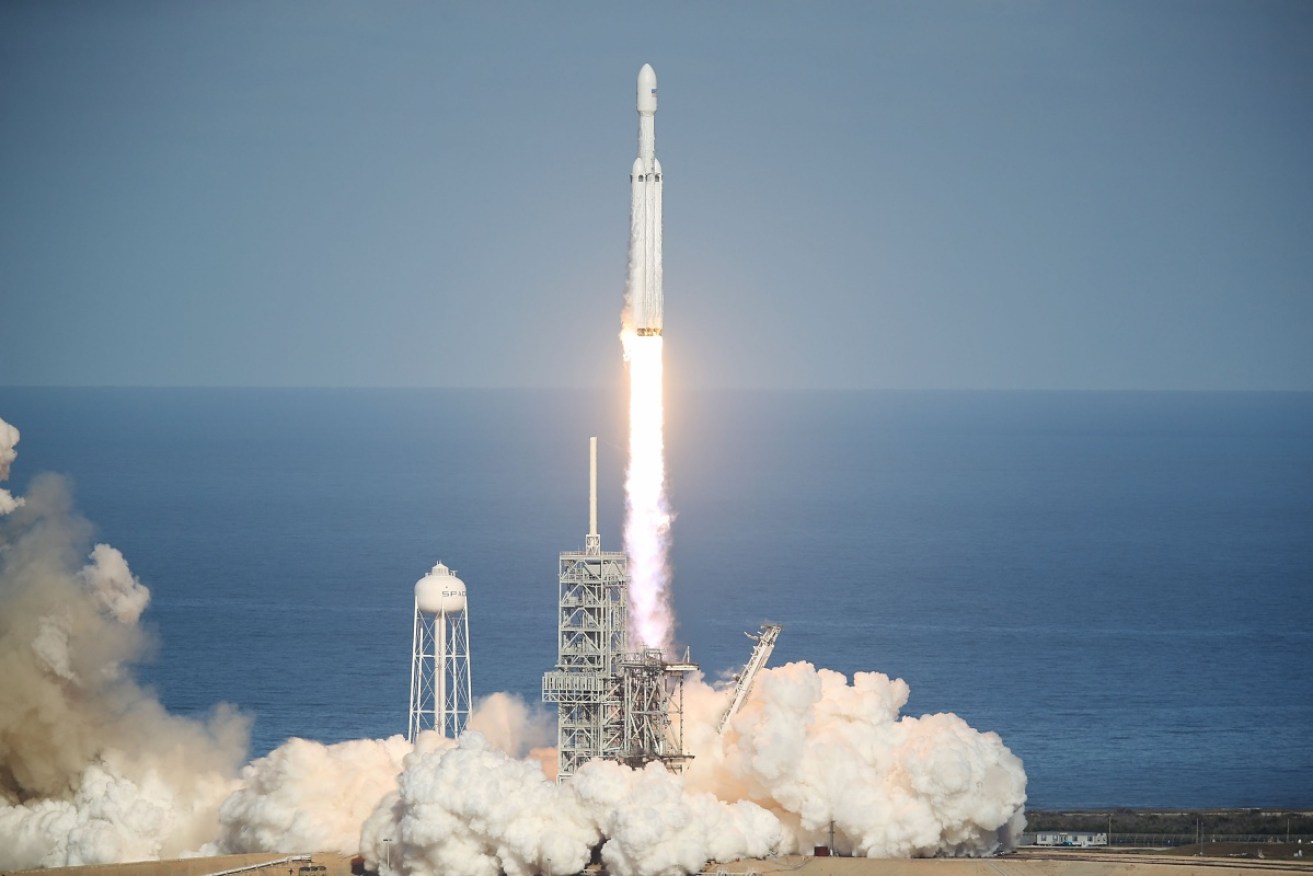NASA’s planet-hunting telescope lifts off


A planet-hunting space telescope has successfully blasted off onboard a Falcon 9 rocket in Florida. Photo: AAP
NASA’s planet-hunting space telescope has embarked on its quest to find new worlds, launching after two days of delays as a result of a rocket-guidance glitch.
The Transit Exoplanet Survey Satellite (TESS) lifted off on schedule on a SpaceX Falcon rocket from Florida’s Cape Canaveral Air Force Station at 6.51pm (local time) on Wednesday, starting the clock on a two-year quest to detect more worlds circling stars beyond our solar system that might harbour life.
Hundreds of thousands of stars will be examined and thousands of exoplanets – planets outside our own solar system – are expected be revealed right in our cosmic backyard.
“The sky will become more beautiful, will become more awesome,” NASA’s top science administrator Thomas Zurbuchen said.
The TESS is designed to scout for planets of all sorts, especially those within the Goldilocks zone, an orbit of possible habitable stars where temperatures are not too hot and not too cold – not whether life exists beyond Earth.

Experts hope the Transiting Exoplanet Survey Satellite (TESS) will find at least 20,000 new alien worlds. Photo: AAP
However, Mr Zurbuchen noted TESS’s discoveries are expected to bring us closer to answering that lingering question.
The telescope, according to the mission’s chief scientist, George Ricker, could identify promising candidates that could be studied in greater detail in the coming years, with NASA’s James Webb Space Telescope.
It will look at a planet’s atmosphere and if it contains the ingredients of life similar to those on Earth, such as water vapour, oxygen, methane, carbon dioxide.
“TESS will tell us where to look at and when to look,” Mr Ricker said.
Currently, the total exoplanet census stands at more than 3700, with another 4500 on the not-yet-verified list. NASA’s director of astrophysics, Paul Hertz, said until 25 years ago the only known planets were in our solar system.
On Thursday (AEST), TESS’s main-stage booster successfully separated from the upper-stage of the rocket and headed back to Earth on a self-guided return flight to an unmanned landing vessel floating in the Atlantic.
The first stage, which can be recycled for future flights, then landed safely on the ocean platform, according to SpaceX launch team announcers on NASA TV.
Blastoff followed a two-day launch postponement forced by a technical glitch in the rocket’s guidance-control system.
-with agencies








